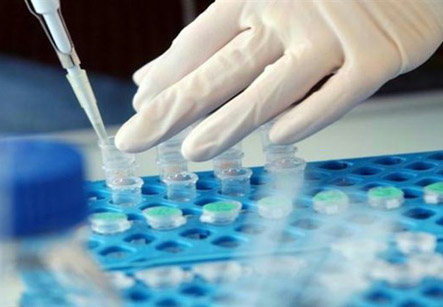Metabolic Disease
Introduction
There are numerous metabolic disorders presenting with symptoms that range from mild to devastating. These disorders are difficult to diagnose because many of the symptoms mimic other diseases and often occur in various combinations. Metabolism is a process by which the food is assimilated by the body to get energy from the food. In general, metabolic disorders are inherited as genetic defects which interfere with the body’s metabolism. Symptoms vary from syndrome to syndrome, but usually include developmental delays, vision and hearing problems, loss of intellectual function, muscle weakness, seizures, abnormal movements, stunted growth, pain and shortened life span. Sometimes, the affected child is misdiagnosed as having cerebral palsy, autism or other conditions whose symptoms are almost similar to metabolic disorders. One in every 4,000 children is affected by one of these disorders.
Iranian scientists have moved to the forefront in embryonic stem cell research, according to a recent joint study by Harvard University and the Massachusetts Institute of Technology

Stem Cell Treatments Give New Hope to Patients with metabolic disorder
In some cases of metabolic disorders, dietary changes and vitamin supplements can be helpful to alleviate the symptoms, but there is no cure for metabolic disorders. A successful bone marrow or stem cell transplant may help slow or halt the progression of certain syndromes. Early diagnosis of these syndromes is critical to prevent irreversible progression of disease.
There are many different types of stem cells. Some of these stem cells are very useful within stem cell treatment, whereas others are less useful or potentially harmful. Stem cells may be the person’s own cells (autologous transplantation) or those of a donor (allogeneic transplantation). In case of autologous stem cell therapy, the cells are collected before chemotherapy or radiation therapy because these treatments can damage stem cells. They are injected back into the body after the treatment.
Procedure:
In this procedure, the stem cells can be obtained from blood. First, the healthy donor is given a drug that causes the bone marrow to release more stem cells into the bloodstream. Then blood is removed through a catheter inserted in one arm and is circulated through a machine that removes stem cells. The rest of the blood is returned to the person through a catheter inserted in the other arm. Stem cells can be preserved for later use by freezing them.
Stem cells are injected into the recipient’s vein. The injected stem cells migrate to and begin to multiply in the recipient’s bones and produce cells containing the enzyme lacking in the specific metabolic disorder.
Stem cell transplantation is risky because the recipient’s white blood cells have been destroyed or reduced in number by chemotherapy or radiation therapy. As a result, the risk of infection is very high for about 2 to 3 weeks.
The risk of infection can be reduced by keeping the recipient in isolation for a period of time (until the transplanted cells begin to produce white blood cells). Growth factors, which stimulate the production of blood cells, can help reduce the risk of infection and graft-versus-host disease.
Recipients of a stem cell transplant usually remain in the hospital for 1 to 2 months. After discharge from the hospital, follow-up visits are necessary at regular intervals.
Stem cells are injected into the recipient’s vein. The injected stem cells migrate to and begin to multiply in the recipient’s bones and produce cells containing the enzyme lacking in the specific metabolic disorder.
The first stem cell transplant for an inherited metabolic disorder was conducted about three decades back. Since then, stem cell transplantation has developed as a long-term enzyme replacement treatment for several metabolic disorders. These treatments work by rebuilding the immune cells of the patient with healthy stem cells of donor. The donor stem cells act by producing, secreting, and replacing the missing enzyme due to the genetic defect. The benefit of this therapy can be in the form of a constant source of enzyme replacement over the entire lifetime of the patient. Stem cells also have the unique ability to provide enzyme therapy even by crossing the blood brain barrier to the central nervous system. In CNS, the neurological damage due to these disorders may be prevented or possibly repaired.